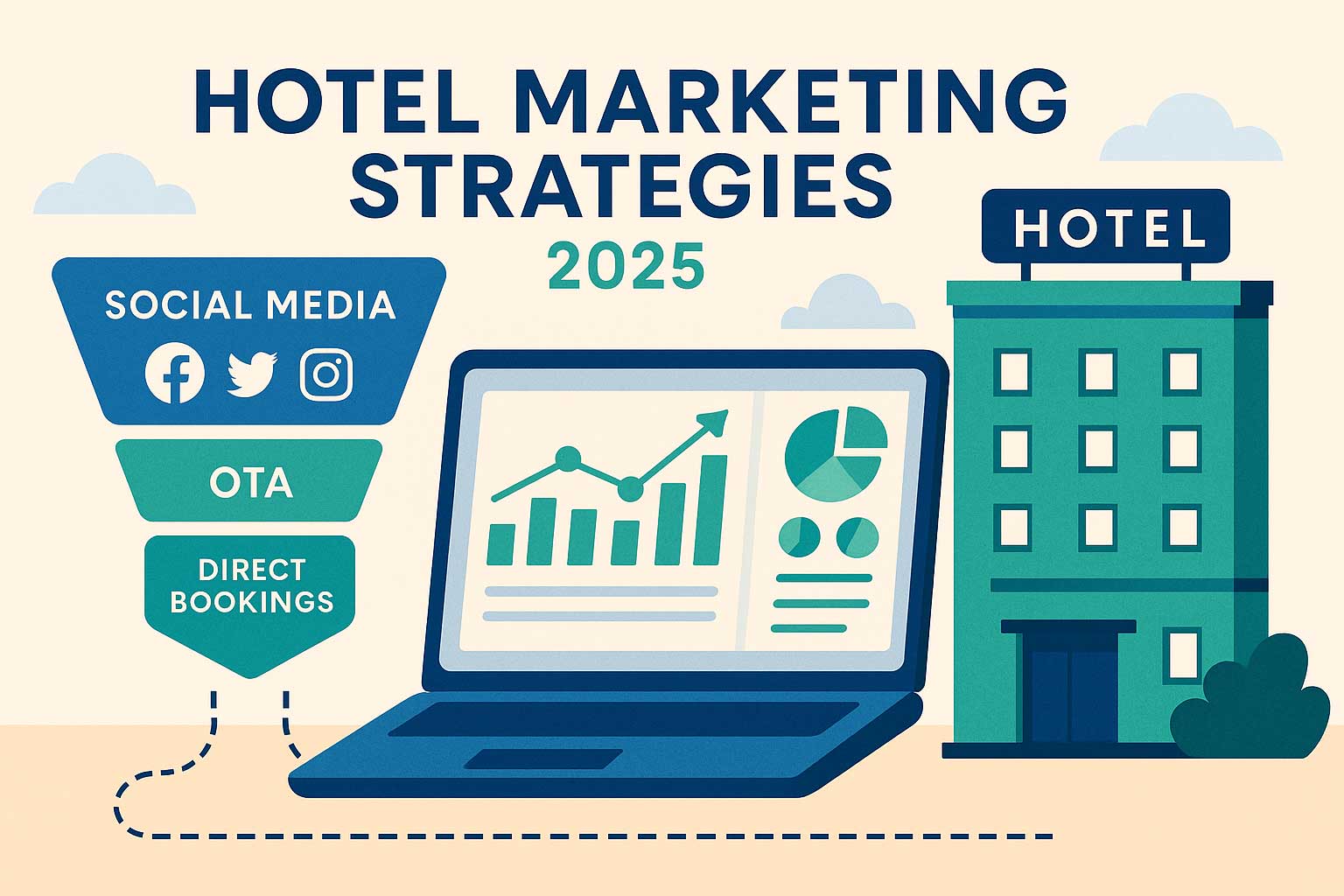Hotel Best Available Rate (BAR): Essential Guide for Hoteliers
Sep 8, 2025
 Mika Takahashi
Mika TakahashiPopular Categories
Hotel Technology & InnovationHotel Operations OptimizationDigital MarketingIndustry TrendsRevenue ManagementHospitality Industry
Popular Categories
Trending Post

Hotel Walk Letter Template: Professional Guest Communication

Online Travel Agents: What They Are and How They Work

Hotel Security Systems: Modern Protection Solutions

Hotel Advertising: Complete Guide to Boost Bookings and Revenue

25 Hotel Marketing Strategy Ideas for 2025: Complete Guide

AI Reservation Agent: Revolutionizing Hotel Booking and Guest Experience

PMS Communication: Streamlining Property Management Through Effective Guest Messaging
Table of contents
In today’s fast-paced and competitive hospitality industry, understanding the Best Available Rate (BAR) is crucial for every hotelier looking to maximize revenue and stay ahead. Think of BAR as your hotel’s baseline pricing strategy—it influences everything from revenue management to distribution and overall profitability, no matter the size of your property.
This guide is here to walk you through hotel BAR rates from a hotelier’s perspective. We’ll cover what BAR really means, how it fits into your pricing strategy, and practical tips on managing it effectively to boost your revenue and keep your hotel competitive.
What is the Best Available Rate (BAR)?
Simply put, the Best Available Rate (BAR) is the lowest unrestricted room rate your hotel offers to anyone for a specific date. It’s open to all guests—no membership needed, no advance purchase required, and no special qualifications to meet. You’ll find BAR rates across all your main sales channels: your hotel’s website, central reservation system (CRS), global distribution system (GDS), and online travel agencies (OTAs).
Here’s what makes BAR stand out:
- It’s publicly available to all guest segments
- No prepayment or advance purchase hoops to jump through
- Standard cancellation policies apply—no extra penalties
- Usually no minimum or maximum length of stay restrictions
BAR is the backbone of pricing transparency and rate parity, ensuring guests see consistent pricing no matter where they book.
The Role of BAR in Hotel Pricing Strategy
For hoteliers, BAR isn’t just another rate—it’s the foundation of your entire revenue management strategy. It sets the benchmark for all other rates, including discounted corporate deals, group bookings, and advance purchase offers. Managing your hotel rates correctly helps you:
- Set a clear pricing baseline that reflects real market conditions
- Keep your rates consistent across multiple distribution channels
- Honor rate parity agreements with OTAs and partners
- Simplify your rate structures to make life easier for guests and staff alike
Most importantly, BAR rates protect your net rate and ensure the revenue from each room night contributes positively to your gross operating profit.
Implementing BAR Rates Effectively
Getting your hotel BAR rates right means teamwork and smart use of technology:
Property Management System (PMS): Your PMS keeps track of room availability and occupancy in real-time, letting you adjust BAR rates accurately based on inventory.
Central Reservation System (CRS): The CRS spreads your BAR rates evenly across direct and indirect channels, maintaining rate parity and stopping rate leakage.
Channel Management: Good channel management tools keep your BAR rates synchronized across OTAs, GDS, and your own booking engine, so pricing and availability stay consistent everywhere.
Revenue Management Team: Your revenue managers keep an eye on market demand, competitor pricing, and booking trends to set BAR rates that strike the perfect balance between revenue and occupancy.
When setting BAR rates, keep these in mind:
- Cover your operating costs and desired profit margin per room night
- Align your hotel rate types with what your competitors are charging
- Adjust for upcoming events, seasons, and demand forecasts
- Keep BAR flexible enough for last-minute bookings and cancellations
BAR and Rate Parity
Keeping rate parity intact is essential when managing BAR prices. Rate parity means offering the same BAR rate across all your sales channels to avoid confusing guests and to honor contracts with OTAs and partners.
If you slip up on rate parity, you risk:
- Straining relationships with your distribution partners
- Extra work handling rate guarantee claims
- Losing future business and damaging your reputation
Use channel management systems and regular checks to make sure your BAR rates stay consistent everywhere.
BAR Rate Example
To see BAR in action, imagine a mid-sized hotel in a popular tourist spot. This hotel uses BAR as the baseline rate for its standard rooms, adjusting it daily based on market demand, occupancy, and local events.
On a typical weekday with moderate demand, the BAR might be $120. But if there’s a big conference in town, demand spikes, and the hotel raises the BAR to $180 for those dates. During slower times or shoulder seasons, the BAR might drop to $90 to attract more guests.
Whether guests book directly or through OTAs, they’ll see this flexible BAR rate as the lowest available flexible option. Meanwhile, discounted rates like advance purchase or negotiated corporate rates might be cheaper but come with restrictions like non-refundable rate policies or minimum stays.
This example shows how BAR works dynamically to balance profitability and competitiveness while keeping pricing transparent and consistent across all channels.
Common Challenges in BAR Rate Management
Managing BAR rates isn’t always smooth sailing. Here are some common hurdles:
- Static Pricing: Treating BAR like a fixed rate instead of adjusting it to market changes means you could miss out on revenue or lose occupancy.
- Complex Rate Structures: Offering too many BAR variants (like BAR Plus or BAR Premium) can confuse guests and staff, hurting booking rates.
- Technology Gaps: If your PMS, CRS, and channel managers don’t sync well, you can end up with rate inconsistencies or overbookings.
- Staff Training: Without proper training, front desk and reservations teams might override rates incorrectly, leading to unhappy guests.
Tackling these challenges means investing in staff education, integrated tech systems, and regular performance reviews.
Measuring BAR Rate Performance
To see how well your BAR strategy is working, track key metrics like:
- Average Daily Rate (ADR)
- Revenue per Available Room (RevPAR)
- Occupancy rate
- Rate parity compliance
- Percentage of direct bookings versus OTA bookings
Regularly reviewing these numbers helps you spot opportunities to fine-tune your BAR rates and boost overall revenue.
Common Misconceptions About the Best Available Rate for Hotels
Even with BAR’s popularity, some myths still linger among hoteliers and guests. Let’s clear them up:
1. BAR is Always the Cheapest Rate:
Not quite. BAR is the lowest unrestricted rate, meaning it offers flexibility like free cancellation and no prepayment. Discounted or non-refundable rates, such as advance purchase reservations, might be cheaper but come with strings attached.
2. BAR Rates Are Fixed and Don’t Change:
BAR is actually a dynamic rate that shifts with market demand, occupancy, and competition. Treating it as fixed means missed chances to maximize revenue or fill rooms.
3. BAR Rates Are Only for Walk-In Guests:
BAR is available to everyone, not just walk-ins. Guests can book it in advance through your website, OTAs, and other channels.
4. Offering BAR Means Losing Pricing Control:
On the contrary, BAR gives you a clear baseline to manage pricing consistently and make smart revenue decisions across channels.
5. BAR Includes All Extra Charges:
BAR usually refers just to the room rate. Extras like breakfast, parking, or resort fees are separate and should be communicated clearly to avoid surprises.
Clearing up these misconceptions helps hoteliers use BAR pricing more effectively to boost revenue, maintain rate parity, and build guest trust.
Conclusion
For hoteliers, the Best Available Rate is more than just a number—it’s a powerful tool that supports your revenue management, keeps distribution consistent, and drives profitability. By understanding BAR’s role, implementing it with the right systems, and maintaining rate parity, you can maximize your room revenue while offering guests transparent, reliable pricing.
Mastering BAR rate management means you’re ready to adapt to market changes, stay competitive, and achieve lasting financial success in today’s dynamic hospitality world.
